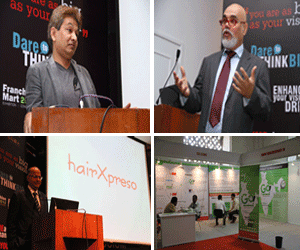Franchise blog: Why voting is important factor in india? – The five-year term of the present Indian government is coming to an end with the advent of Uttar Pradesh legislative assembly election due to be held in February, 2013. Different parties participating in the assembly elections have started the game of ‘fooling people’ for gathering their votes. Last year was full of corruption incidents starting from the ’2G Spectrum’ to ‘Commonwealth Games’ which brought the real picture of the so called ‘Politicians’ appointed by the people to lay down policies that brings development and improvement in their living standards. The present chief minister of Uttar Pradesh Mayawati, leader of Bahujan Samaj Party has been popular among the ‘Dalits’ of Uttar Pradesh but based on the number of corrupted officers and leaders that have been surrounding this government, it is likely to fall this year.
‘Corruption’ will be an important factor for voters to rule out parties which have their leaders involved in illegal ways of gathering money from poor people. But the point is how can a voter decide which party to select? How to believe that a particular party does not consists of members who are involved in corruption and will perform their duty sincerely? The participants from different parties competing in the upcoming Uttar Pradesh assembly elections have started promoting about the policies that will be laid by them on the critical issues of education, employment, corruption and money rise. However for a common man it becomes difficult to decide whether these are just promotional offers to get their vote or some changes will really be done to eradicate issues like corruption.
Getting back to the question of how to know whether a party is good or bad? Some people in India vote for a particular party based on its past record while most of them vote on the basis of their caste. The percentage of people turning out to vote has been around 25-35 percent in the past few years. This has been the primary reason for selection of inefficient leaders. People belonging to rural areas having a poor literacy level are attracted by the false illusions and promises made by the leaders of different parties.
This time around instead on reducing the prices of legumes, rice and other food products parties have brought computer and laptops as their weapons for attracting voters. Samajwadi Party leader, Mulayam Singh recently announced that if their party is selected then every student that qualifies in the Intermediate exam will be awarded ‘Free Laptops’ while those qualifying their High School will be given ‘Free Tablet PC’. In reply, Bharatiya Janta Party has decided to give free laptops to students passing class 5th and desktops to those who have qualified their intermediate successfully. Some people find these things amusing but the fact is that a lot of them tend to change their voting decision based on such news. Places where there is no electricity for almost 20 hours a day how will a laptop or even a broadband connection work there remains still unanswered.
This is where India lacks. People get dragged by the imaginary policies laid down by the politicians thinking them as their only medium of removing problems. They need to have a proper understanding about the importance of their vote and guidelines for selecting right candidates. The percentage of people participating in the voting program should increase up to 70-80 percent. This will eventually lead to higher possibility of right candidate selection. Voting based on caste should be totally eliminated and every candidate must be judged based on the qualifications possessed. As a citizen of India, it is your right and duty to select the most potential candidate as your leader who can live up to your expectations.
Related Post:
1. Is Retail Investors Are confident?
2. Is Microsoft really needs to launch Office for iPad?
3. 10 Best Global Franchises 2014































 +91 9909960054
+91 9909960054
Pingback: Manohar
Pingback: jagdish
Pingback: Lalit
Pingback: Mahim Ali